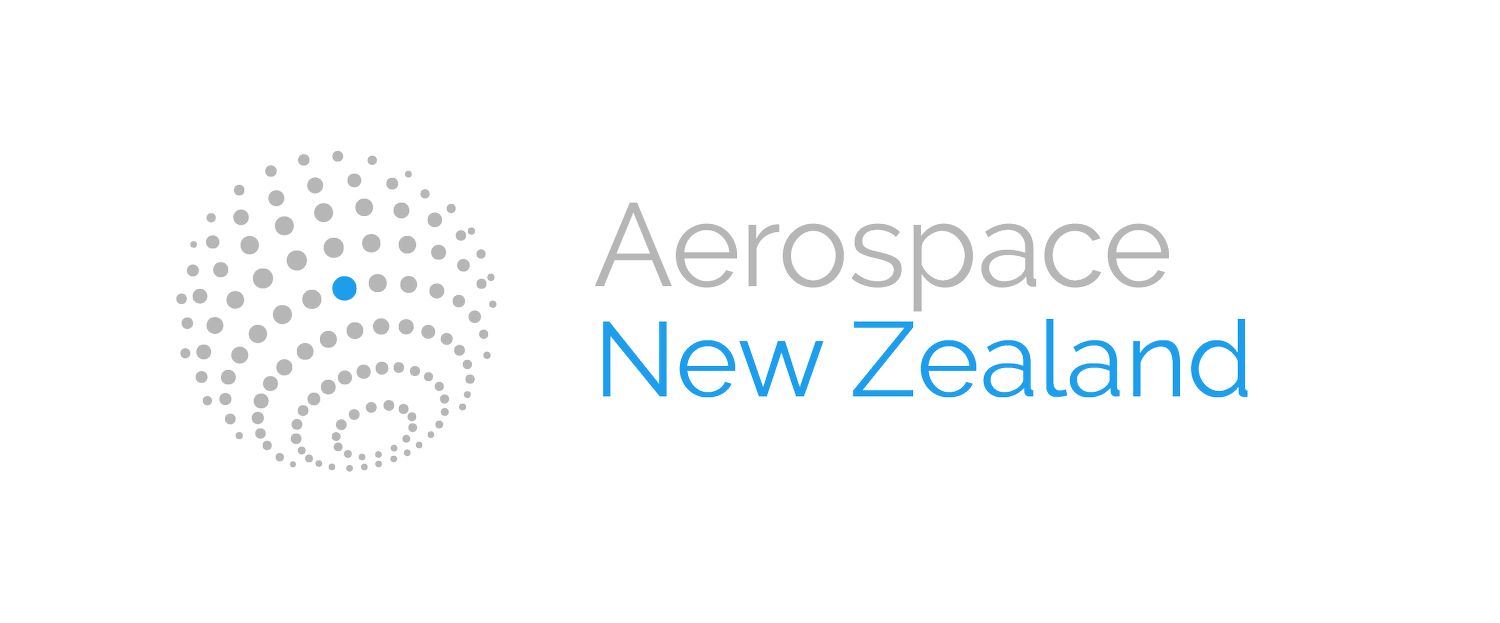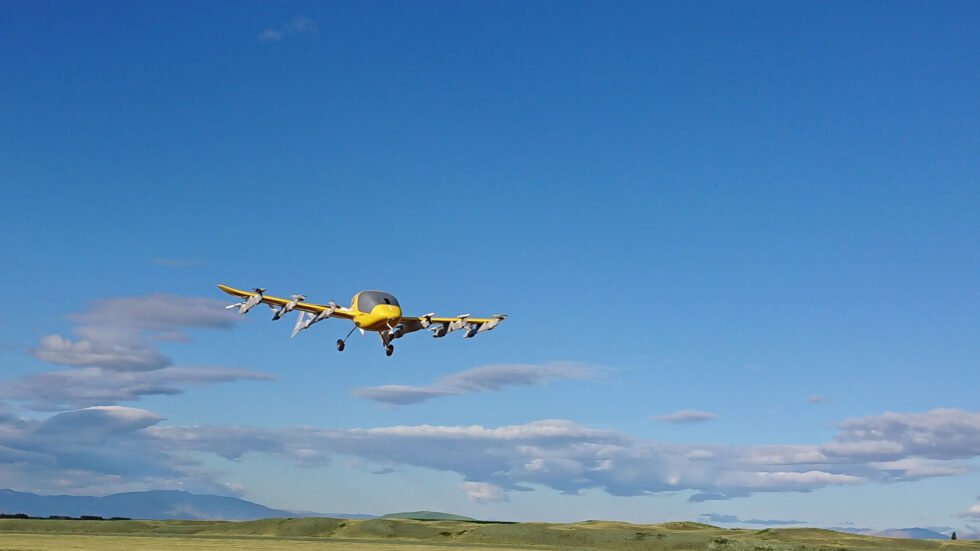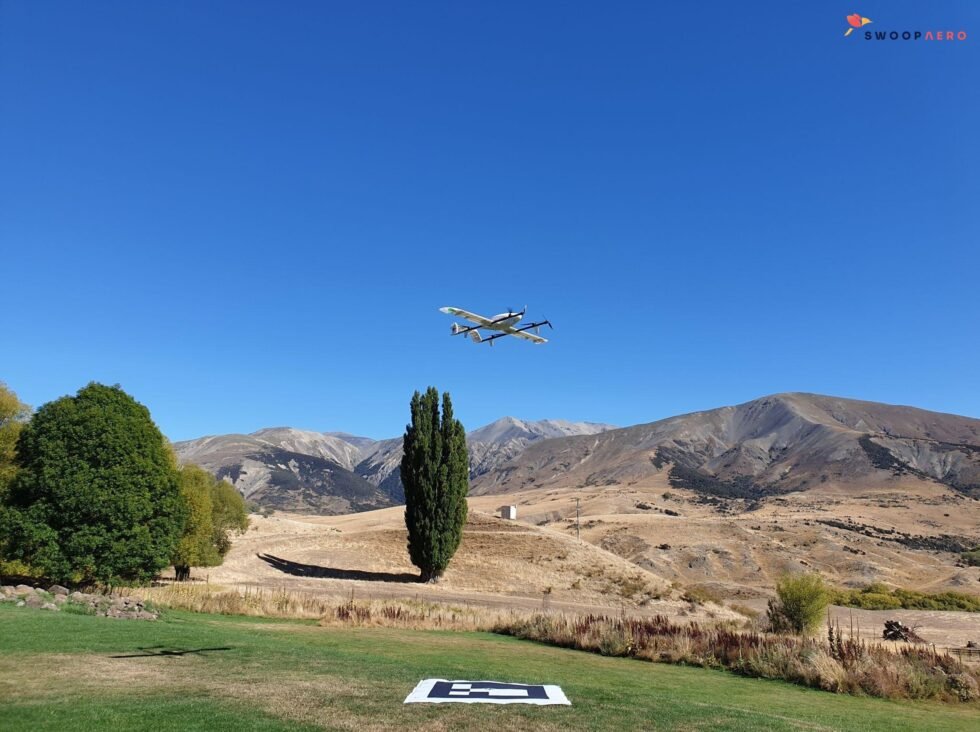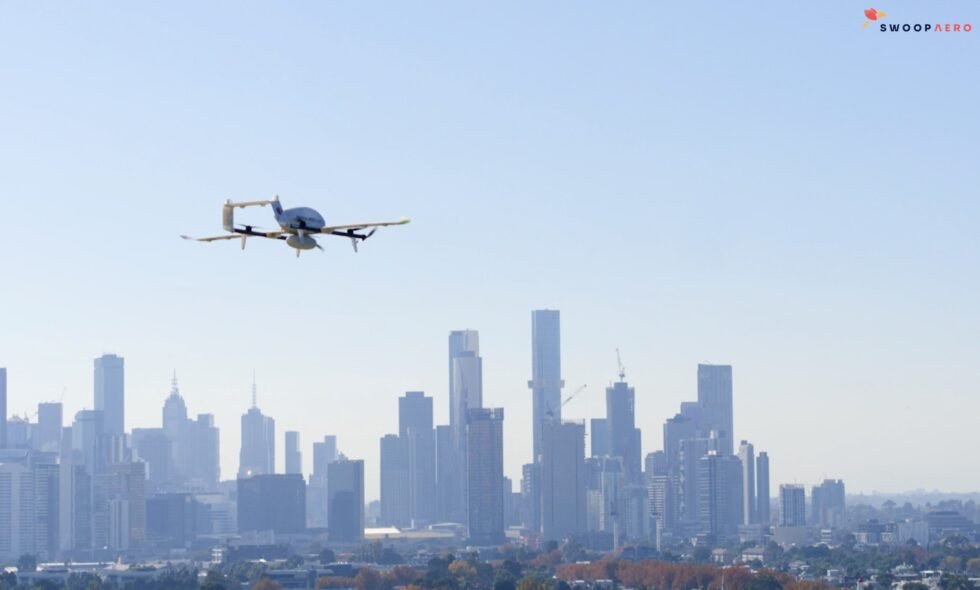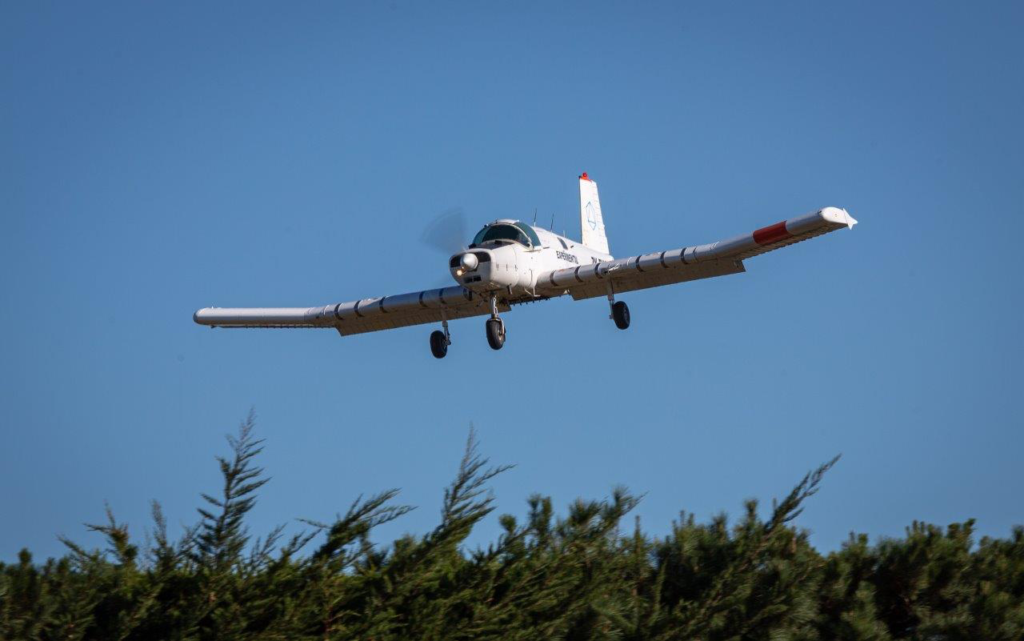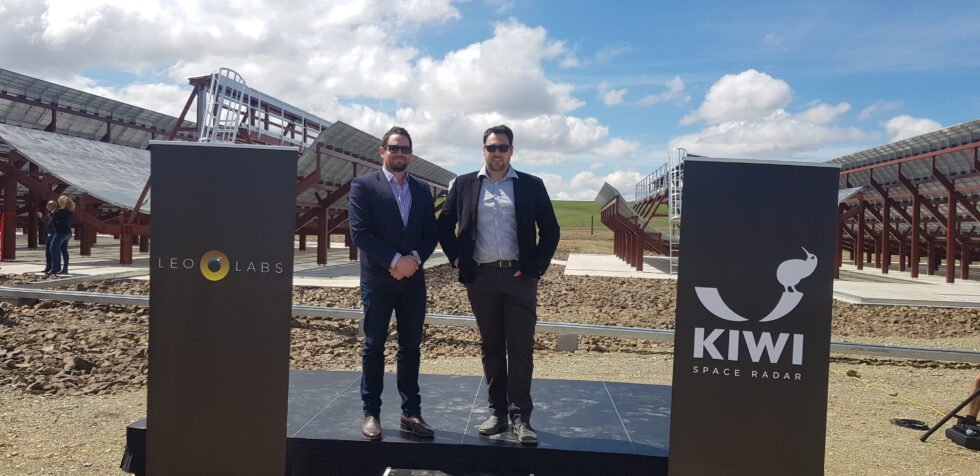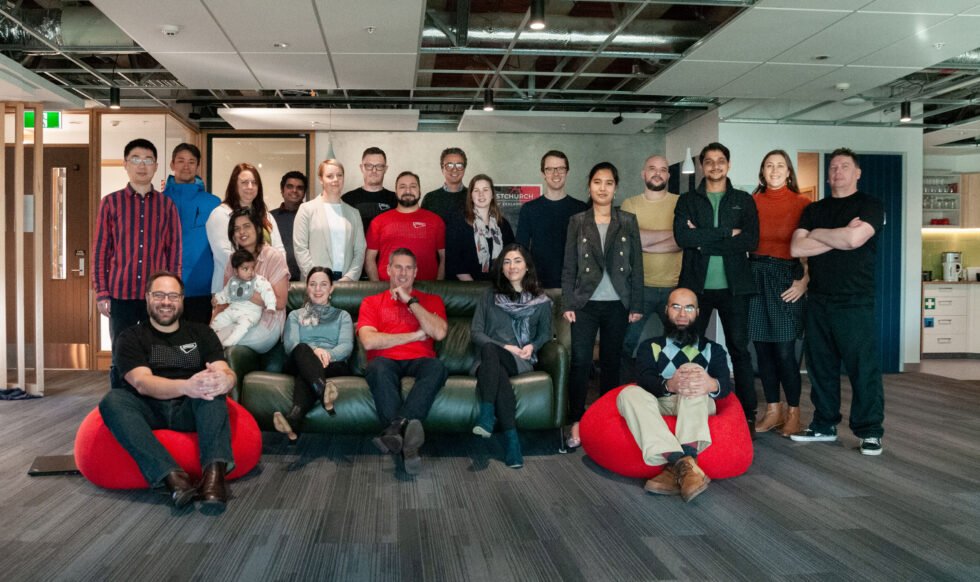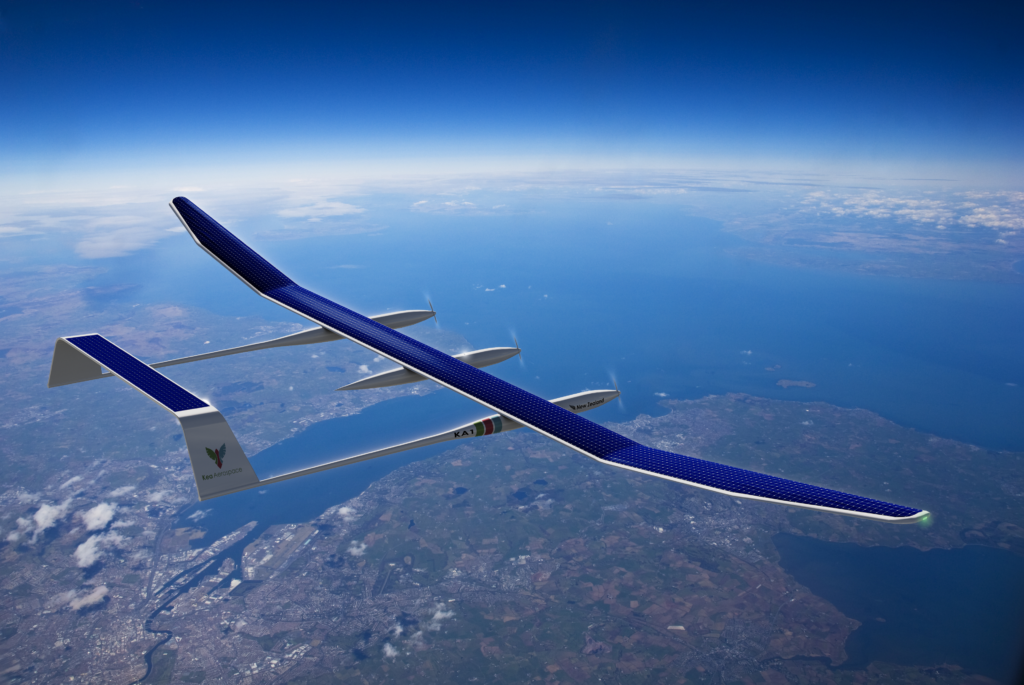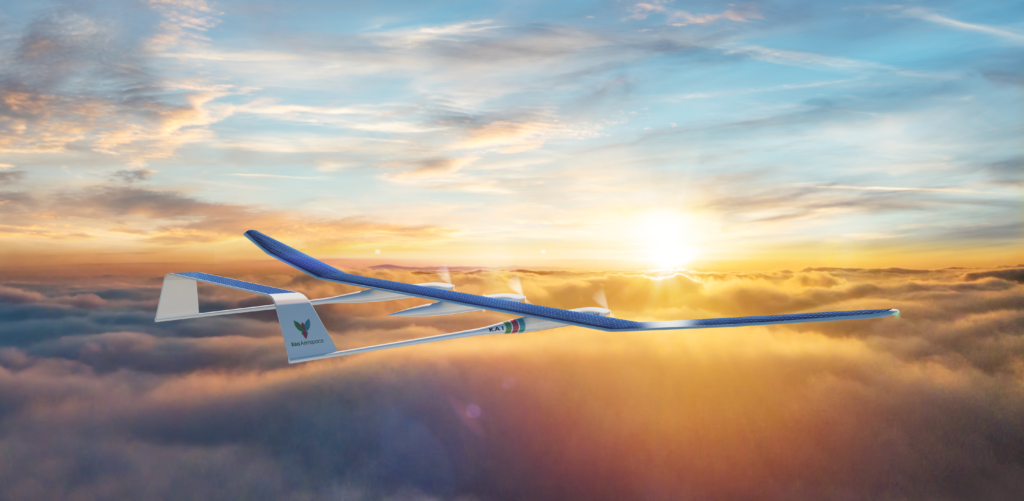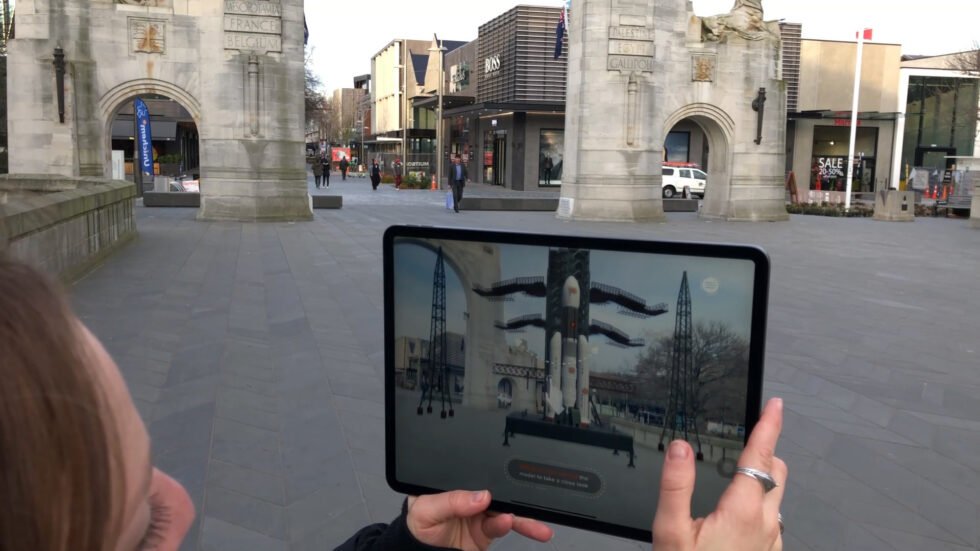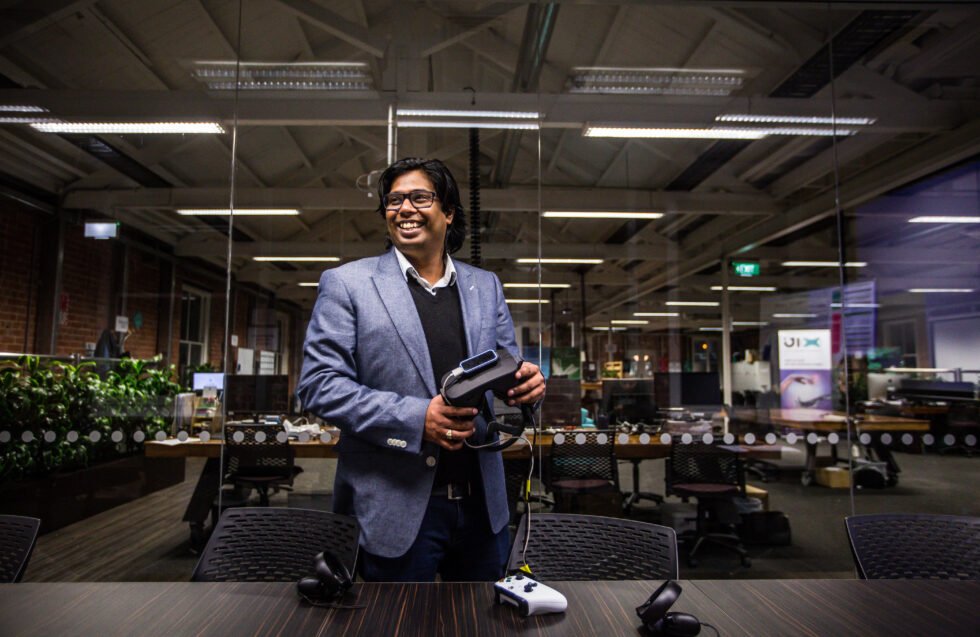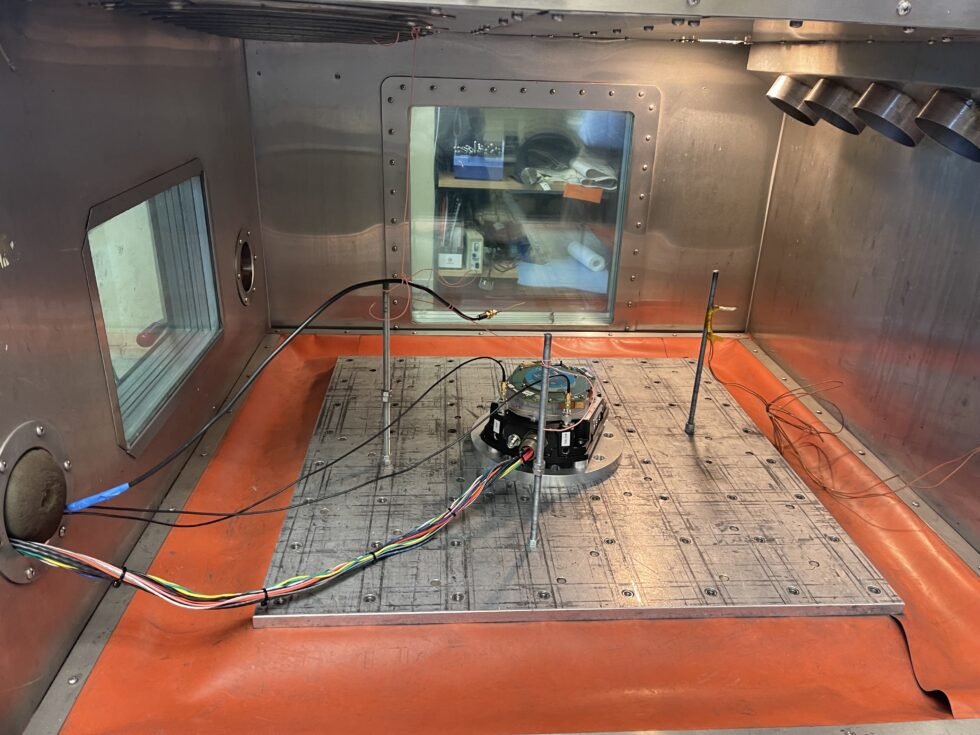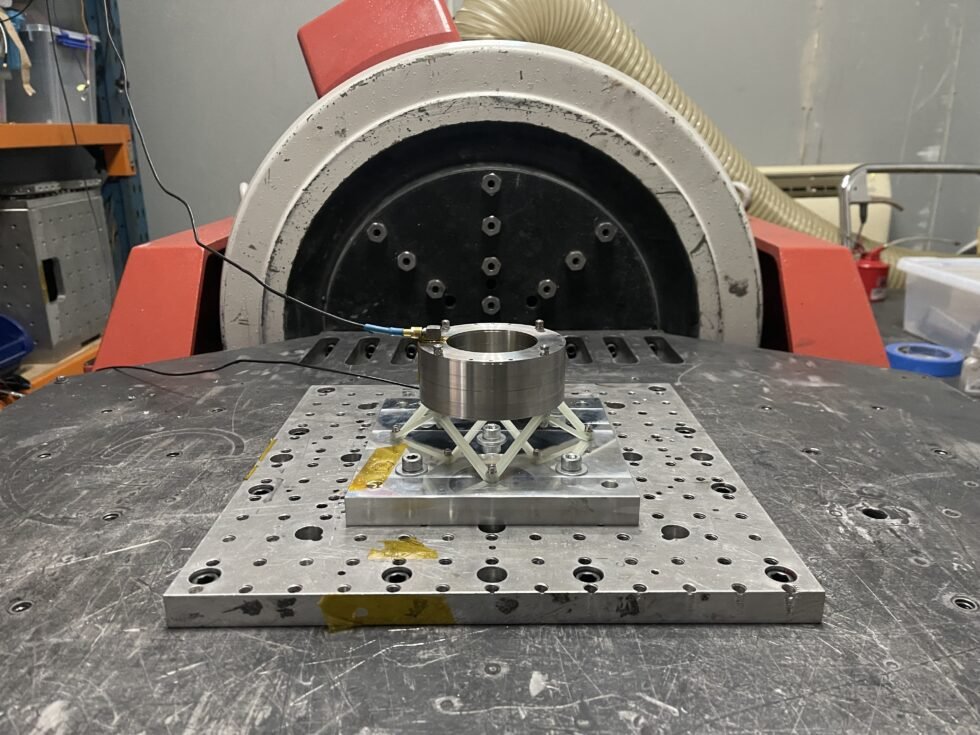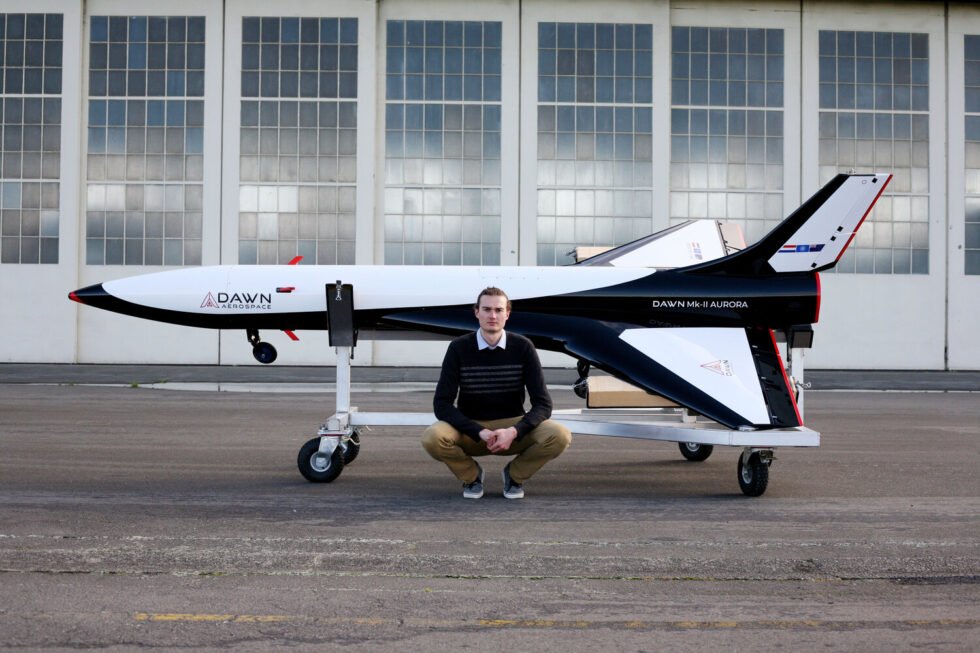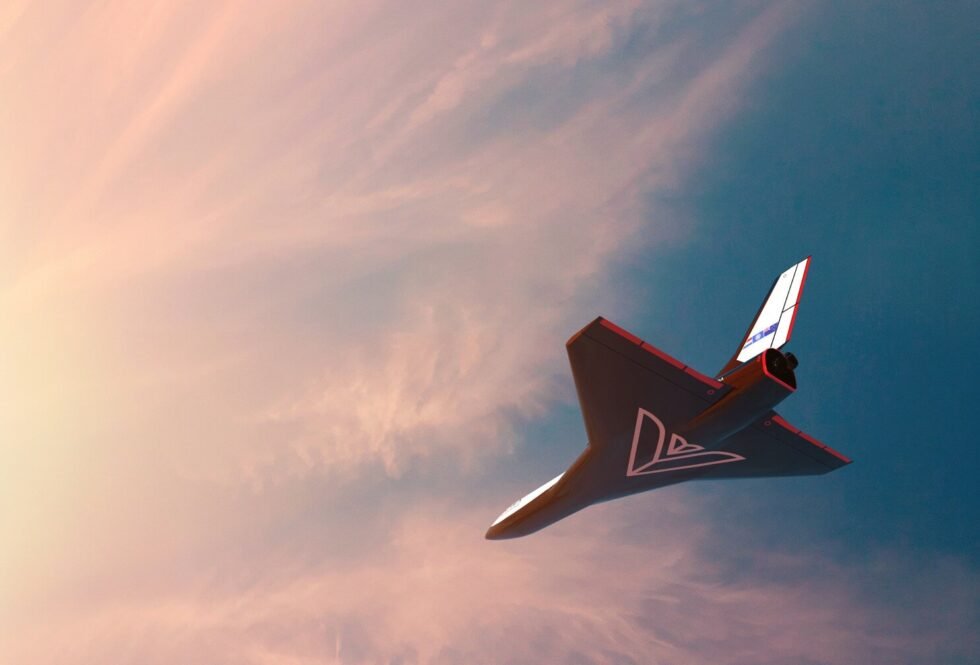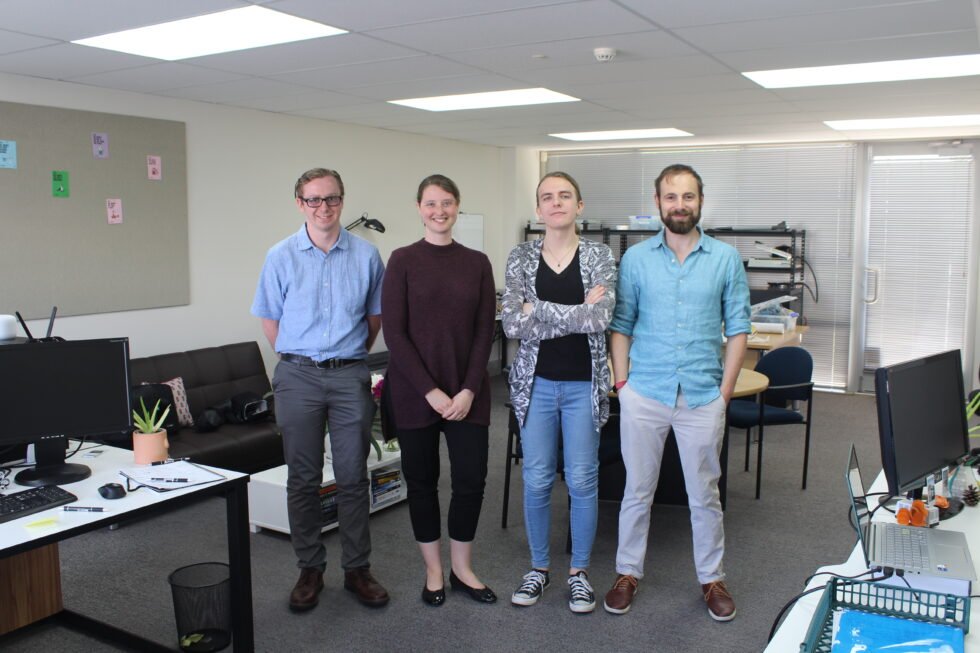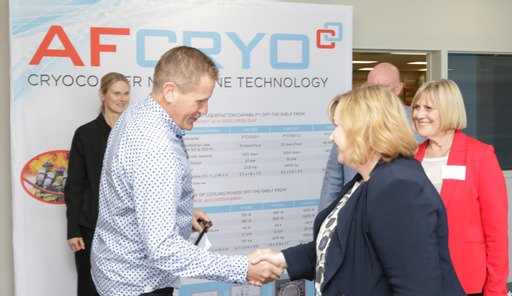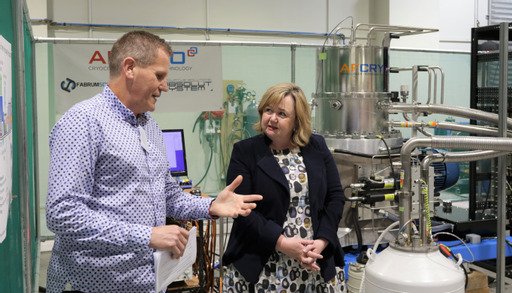Aerospace Projects Lifting Off in Ōtautahi Christchurch
Ōtautahi Christchurch is home to a diverse community of start-ups, entrepreneur-driven companies and organisations dedicated to aerospace innovation.
Canterbury is well on the way to being an integral facet of a flourishing national aerospace sector. With unique physical attributes, proximity to international ports, existing testing facilities and one of New Zealand’s largest electronic manufacturing clusters, the talent pool is also here; nearly a third of national aerospace engineering students, and nearly a quarter of engineering students, graduate from Canterbury universities.
Fuelling the transition to more sustainable, efficient ways of transport, the Christchurch aerospace industry has a range of new and well-established key players shaping the sector, from research and design, to building, testing, launching, and servicing satellites, drones, flying vehicles, space launch vehicles, and manned and unmanned spacecraft.
Below, we’ve curated a selection of exciting companies operating in the region that are making a splash in the aerospace industry.
Chris Boyle and Minister Megan Woods
Chris Boyle and Minister Megan Woods
AFCryo
Delivering technically advanced and innovative composite engineering and cryogenic solutions.
World-leaders in magnetic, superconducting, and cryogenic systems, AFCryo (formerly Fabrum Solutions) designs, develops and manufactures all of their technology here in Christchurch. Their facilities include the largest 5 axis waterjet profiling company in New Zealand, along with CNC mills and turning centres. With a large team of design engineers and craftsmen, they have the ability to conceptualise, design, manufacture and assemble complete systems inhouse.
AFCryo works internationally and leads the world in the design, development, and build of industrial composite technological solutions. With a wide range of capabilities and expertise, AFCryo contributes to several industries, including medical, research, power systems, creative, and oil and utilities.
AFCryo produces equipment for the cryogenic and superconducting industries, including composites for cryogenic containment and cooling systems in power systems equipment and other magnetic systems. AFCryo also manufactures large volume industrialised cryocoolers.
Since building the composite dewar and associated hardware for the world’s first partial core superconducting transformer in conjunction with the University of Canterbury, AFCryo have also been involved in numerous global HTS and LTS projects.
Managing Director at AFCryo, Christopher Boyle sees Christchurch as a living environment that attracts open minded motivated people. “Our choice to locate in Christchurch was deliberate – the network is very supportive of innovative discussions, and we wanted to build on the city’s depth of manufacturing and draw on the talent from the region’s tertiary institutes.”
We had a chat to AFCryo Managing Director Chris Boyle.
What do you see as big growth opportunities in Canterbury in the aerospace sector? How do you see AFCryo to fit into this picture?
There’s a lot of potential for growth in the Christchurch aerospace industry. Opportunities in plasma drives, fuelling systems, and integrated satellite platforms in particular are a few of the key areas for Canterbury aerospace.
AFCryo’s role is to continue growing as a significant player in global hydrogen production activities, LOX systems for aviation, integrated platforms for satellite systems, and high speed transportation systems.
In early 2020, we teamed up with the UK’s Clean Power Hydrogen (CPH2) company, signing a landmark agreement to pave the way to produce a world-leading, Green Hydrogen production system from New Zealand by mid 2021. This was an exciting step, joining New Zealand technology with UK-developed electrolyser technology. It will provide a solution that will help the New Zealand Government’s vision to harness the hydrogen opportunity for a sustainable and resilient energy future and create a zero-carbon emmission’s environment. It is also important that the employment generated by the New Zealand technology will be based in New Zealand.
We’re now working on some exciting new projects, including plasma drives for space travel, superconducting aviation motors, hydrogen production units, and next evolution coldhead technology for low-temperature cryocoolers.
Why do you think Canterbury is an ideal location for an aerospace hub for New Zealand?
Canterbury has such a supportive innovation network, making it an ideal aerospace hub. It has high-tech manufacturers, and a living environment that attracts open minded, motivated people. There’s a huge opportunity for growth in first-stage creation and prototyping for the aerospace sector, especially in engineering design and manufacturing.
The Asteria team: Anthony Watson, Sarah Pratt, Jess Page, and David Wright
Asteria Engineering Consultancy
Creating state-of-the-art bespoke electrical and mechanical solutions for New Zealand’s burgeoning aerospace sector.
Asteria offers engineering consulting services, rapid prototyping, electronics and PCB design, embedded software and firmware, cutting edge technologies, power systems and more. Their goal: to help their clients’ projects get off the ground.
From harnessing solar arrays to building cubesats, Asteria Engineering Consultancy understands how to create specialised products for flight and space. Asteria works closely with clients from understanding requirements and design right through to manufacture and testing to create customised, successful solutions to achieve their clients’ goals.
Since beginning in 2017, Asteria has grown to provide services to a range of customers here at home in New Zealand, as well as internationally. Asteria has worked on nanosatellites, unmanned aerial vehicles, payloads and specialised batteries. Leaders in electrical and aerospace engineering, Asteria provides customised, reliable, high quality, and timely services to every client.
We had a chat to Asteria Founder and CEO David Wright.
Where do you see Asteria in the future?
First, we want to be the company to go to for bespoke, small, lightweight, effective electronics for aerospace in New Zealand.
Second, we offer excellent engineering consulting services to help aerospace companies in New Zealand thrive and grow their businesses. The aerospace sector in New Zealand, and especially in Canterbury, is on the edge of booming and we want to be a core part of that, growing Asteria and supporting our fellow aerospace entrepreneurs.
Third, we offer rapid prototyping – but we want to make that even faster (without compromising on quality). We’re exploring a number of ways that we could reduce the time to create bespoke aerospace solutions, including the development of a GaNFET power system prototyping service, which would significantly cut the development time of creating high performance power systems.
What do you see as big growth opportunities in Canterbury in the aerospace sector? How do you see Asteria to fit into this picture?
We’re seeing more companies pushing the boundaries of possibility, and those companies are growing. As those companies, like Dawn Aerospace and Kea Aerospace, strive to achieve their goals, we see Asteria as a potential partner to facilitate that, providing lightweight, small electronics ideally suited for flight so that those companies can focus on achieving their dreams.
Why do you think Canterbury is an ideal location for an aerospace hub for New Zealand, and specifically for Asteria?
The community and knowledge base is what makes Canterbury great. There are so many people here with a range of expertise, both in aerospace and in supporting areas, that have a passion for space and discovery. These people enjoy working together and helping each other, and coming together as a community at the aerospace meet-ups. For aerospace companies looking to grow, this is the place to be – which is why Asteria is here.
Dawn Mk II Aurora
Stefan Powell with the Dawn Mk II Aurora
Dawn Aerospace
Creating end-to-end architecture for delivering, positioning, and returning spacecraft in an environmentally conscious way.
Merging the world of aviation and rockets, the Dawn Mk-II Aurora is the latest rocket-powered vehicle of a series that will eventually deliver and return satellites and assets from space.
“The Aurora represents a massive step forward in space transportation,” said Stefan Powell, Chief Technology Officer of Dawn Aerospace. “Using the same vehicle hundreds or even thousands of times means we don’t need a factory to produce rockets. We can operate a fleet of vehicles to access space daily. And we don’t have to pollute the ocean with rocket debris as we do it.”
With staff in Delft, Netherlands, Europe’s aerospace hub, Dawn’s HQ is based here in Christchurch. “It’s an ideal place to base operations, because it is a good location for flight testing, has less air traffic and relatively stable weather,” says Stefan.
Removing the need for exclusion zones and to shut down airspace for flight, the Dawn Mk-II Aurora is capable of taking off and landing from standard airports, alongside normal aircraft.
“The challenge of getting to space is equal parts the vehicle, the launch infrastructure and the regulation,” said James Powell, General Manager and CFO. “Building a cheaper rocket, as many are trying to do, only helps with the first part. Dawn’s spaceplane addresses all three factors. The CAA and NZSA have established the best regulatory system in the world, which makes this possible. We are privileged to be working with them.”
Shaker Table
GNSS device in HALT chamber
HALT & HASS Consulting
Providing development testing and advice, specializing in environmental testing, including Highly Accelerated Life Testing (HALT) and Highly Accelerated Stress Screening (HASS).
Founded in 2005 to serve the domestic and international market, HALT & HASS is passionate about testing and reliability. Providing a range of services, testing, and equipment, HALT & HASS takes a pragmatic approach to planning, testing, and reporting, and ensuring clients understand the processes and outcomes.
Based in Christchurch, HALT & HASS work closely with the regions’ hyper-electronics and healthcare community, along with supporting industries. They sell, service and maintain test equipment, as well as offer many types of testing, including Highly Accelerated Life Testing (HALT); quantify product reliability using Accelerated Life Testing (ALT); demonstrate reliability using Reliability Demonstration Testing (RDT); and control manufacturing using Highly Accelerated Stress Screening (HASS).
Striving to help clients increase profitability, market share, and brand awareness, HALT & HASS provides end-to-end solutions and advice for clients.
We had a chat to HALT & HASS Owner Donovan Johnson.
Where do you see HALT & HASS in the Future?
We plan on increasing our testing capability over the coming years to further support the industries we serve – our moniker of “You make it – we break it” fits perfectly, we use over-stress testing to reduce testing time and cost by fast and iterative design changes, and increase effectiveness and reliability of the end product. Our business model is relatively simple, consisting of two main sections – both we plan on improving going forward:
Test Lab
The lab is designed to allow quick and economical access to all customers, but more specifically with a goal of supporting start-ups and disruptive technologies by providing access to high-tech, modern test equipment. Early in development, and particularly for start-ups, funding is important, we’re here to ensure the maximum impact from your testing through the availability of our expertise to streamline your testing process.
Test Equipment
We sell, service and maintain a range of the world’s leading test equipment. From environmental chambers to vibration, packaging and Highly Accelerated Life Testing chambers. The sales side of our business is used to generate funding for our laboratory – so that we can continue to purchase and provide modern equipment and fill the niche market for microservices in the testing space. The culmination of these two parts gives us the ability to provide a full circle or service to our customers. When you’re new we’ll do everything we can to get you results in a quick and efficient manner. When you grow we want to be there too – providing the equipment and expertise to help you set up your own internal testing capabilities, which then feeds back into new equipment purchases for our lab, to help future start-ups make their way in the world.
What do you see as big growth opportunities in Canterbury in the aerospace sector? How do you see HALT & HASS to fit into this picture?
I think the space industry globally is going epically well. New Zealand is definitely up there with innovation and expertise and it’s exciting to see the development in Canterbury specifically. In order to attract more companies and start-ups we need to make sure we have facilities in place to speed development, ease regulation, and allow access to testing facilities from the sub-module level up to full-scale rockets. Project Tawhaki is an outstanding development that enables customers to test their products in an isolated, yet supported place. Full-scale testing is difficult, and often conducted in an ad hoc manner to get around regulatory requirements. An open, accessible space such as this is critical to the success of the space industry in Christchurch.
Regarding testing facilities: We’d love to scale up to provide a world-leading testing facility for the space industry. I believe we’ve got a good base to do so, but the challenge for us is capital funding. Test equipment, and specifically space-testing equipment is extremely expensive, meaning the business-case to procure it rests on the market willing to use it. We currently wouldn’t have enough customers to generate a ROI on this equipment and so we’re actively looking at alternative funding methods to procure the resource for Canterbury. Our suppliers have extensive experience in setting up these facilities, and they produce the equipment needed. We’re currently looking at how we can leverage that connection from a funding perspective to expand our testing service to cover the various needs of the space industry.
Regarding reliability and expertise: I love what I do, I’ve been testing stuff since 2000 and have enjoyed a progression from testing network equipment to electric propulsion, to rockets. I’ve built an extensive knowledge of the test methods that provide the fastest results, lowering costs, and decreasing design iteration duty cycles. It’s this knowledge that I hope to share with the community, enabling fast development to occur.
Regarding regulation: Standards are designed to give a supplier a simplified path to market. If you meet the standards you get to launch your rocket, in this instance. One of the outstanding opportunities we have as a country and a region is the fact we are starting with a blank page on regulation. Space-native countries like the USA have heavy and cumbersome frameworks forged from decades of failures. These were carved out to protect human life and are still applied to modern automated launch systems with the same brush, being heavy, old, and somewhat irrelevant to modern vehicles they unnecessarily slow development, by burdening the supplier with testing methodologies that have been improved upon 10–fold in the past few years.
One of the great tests, and the one from which we get our name is Highly Accelerated Life Testing (HALT). HALT is and has been used by many aerospace companies to increase reliability, to find product weakness early in design, and to decrease the time to market. It’s a death-test, and fits our ethos perfectly. Running HALT, and to a greater extent Highly Accelerated Stress Screening (HASS) reduces the risk of failure but also the time to develop and deploy products. Current testing methods rely on single-axis vibration testing, along with long term thermal cycling (weeks-months), when the same failure-modes could be uncovered using modern testing methods such as HALT in hours or days.
I sincerely hope the industry, and the government realise the opportunity that exists here. To repeat, there are faster ways to test, which means faster times to market, lower cost of entry, and higher reliability on launch. HHCHZ has the experience to design testing programmes that are modern, scalable and efficient and we really want to contribute in this space.
Why do you think Canterbury is an ideal location for an aerospace hub for New Zealand, and specifically for HALT & HASS?
Well, I mean, personally and number 1 for me is that I grew up and live here! My connections – both work and personal, have been developed over 20+ years of working in the high-tech industry in Canterbury. As a region, we have an excellent and diverse set of engineering talent that has successfully driven startups from concept through to international deployment in a wide-range of industries. In what’s considered a very small city globally, we’ve become known as the “Silicon Plains” where the high-tech industry has flourished.
From electric-automotive, to healthcare, location-based systems, power electronics and to networking, and now on to space we’ve developed a workforce that is passionate, innovative and ready to solve real-world and often extremely difficult challenges. The cross-pollination of engineers across these industries provides a well-rounded workforce that’s solved a lot of problems, in a lot of different markets, this creates a can-do mindset, and the engineering community in Canterbury is something I deeply appreciate and love. I love the fact I can go to a new start-up for a meeting, and within 5 minutes I’ll see someone I’ve worked with, someone we’ve tested for, or helped in some other way. It might seem to the outsider that this indicates a limited talent pool – but it’s quite the opposite, it’s more that people like to move around – because they love the challenge of something new – and that over 20 years we’ve been lucky enough to work with large pools of engineers at some of Canterbury’s finest tech companies.
The other cool thing about Canterbury is it’s access to the outdoors, and to vast swathes of land – specifically now with access to Project Tawhaki we just have the ability to deploy and test at a scale most other small regions don’t enjoy. The engineering pool, coupled with access to increasingly robust testing facilities will enable us to research and develop things I haven’t even imagined yet, let alone comprehend.
Specifically for HALT & HASS, it’s a great place to live and work, my lab is at my home – I love what I do, and I thoroughly enjoy working with our customers and showing them around. There is space to grow, and we’ve enjoyed strong support over the last few years that’s enabled us to grow organically, without the need for external funding, a resource that contributes back to those that are under-resourced in the early days of start-ups but can scale to help larger customers when they grow.
Sakthi Priya Balaji Ranganathan
ISRO Video Flipping
JIX Reality
Building commercially viable real-world applications for Extended Reality and Artificial Intelligence.
JIX is a R&D studio continuously experimenting, designing and building digital experiences. Jix offers an accessible path to innovation through commercially viable XR(VR/AR/MR) & AI solutions.
JIX was born in 2017 when founder Sakthi Priya Balaji Ranganathan noticed a significant void in applying Immersive Tech Research to actual industry problems. Over the course of the last 4 years, Jix have built a host of solutions ranging from large screen AR spectacles, AR travel portals, AR Retail Product Visualisation to virtual simulations for emergency training and multi-sensory museum exhibits.
The Jix team has the ability to understand technology, discover the shortest way to implement it and more importantly know how exactly it fits into their customer’s business. ‘Be Adaptable. Be Flexible’ is their approach to staying on top of the evolving tech game.
Where do you see Jix in the future?
We would love to tell stories about the aerospace industry in a more exponential way. There’s so much innovation and room for different companies to set up base here in Christchurch. What we do is tell stories in an immersive way, using virtual and augmented reality, and since it is an emerging market, not many people understand the potential of this medium. We are a research lab and innovation studio, and for the last couple of years, Christchurch has given us the room to grow and the opportunity to work with the innovation ecosystem, and we’re excited to keep growing and connecting with more emerging businesses and individuals.
How do you see Jix in the aerospace sector as it grows in Canterbury?
There’s a great potential for XR to enhance the demonstration, selling, service, and predictive maintenance of aerospace manufacturing through realistic digital twins, virtual simulation & training, and Vision AI. This is the space JIX wants to be leading the change in. We believe we can be part of the huge digital transformation wave that is underway in the aerospace industry to make it more accessible.
Why do you think Canterbury is an ideal location for an aerospace hub for New Zealand and specifically for Jix?
The geography and vast landscape is well suited to aerospace activities, and lower costs in running a business compared to other cities makes it very practical. There is also such a high calibre of students, graduates, and researchers coming out of the universities in Canterbury.
As the founder of Jix, I come completely from a technical background, and when we first started I didn’t have any clue of what we were doing business-wise. All we had was a prototype and a proof of concept of what we could do with artificial intelligence and virtual reality. We had no idea we would have this chance to grow, and we are very fortunate to grow in the aerospace industry. In particular, the aerospace Meet Ups, the Aerospace Challenge, and the amazing community have put us in the centre of the ecosystem, and gave us a strong foundation to start working with some key people, like the International Antarctic Centre, Ōtakaro, and Te Papa Museum.
We are really glad to be part of this, and we hope that any other budding researchers, computer scientists, rocket engineers or graduates coming out of uni can look up to companies like us, and see there’s an opportunity to grow right here in Christchurch.
Kea Atmos
Kea Atmos
Kea Aerospace
Building a fleet of stratospheric aircraft that will be a game-changer for global aerial imaging.
Kea Aerospace is developing a solar-powered, unmanned aircraft, the Kea Atmos, that will collect frequent, high-resolution aerial images. Operating at about twice the altitude of a commercial airliner, the Kea Atmos will fly continuously for months at a time in the stratosphere, a sweet spot for aerial imaging. Spanning an impressive 32 metres, it will be the largest un-crewed aircraft designed and built in the Southern Hemisphere.
The Kea Atmos will plug the data gap in obtaining frequent, cost-effective, high-resolution, multispectral aerial imagery. It will deliver aerial business intelligence for industries such as precision agriculture, environmental monitoring, maritime surveillance, smart city projects and disaster management.
The endurance and versatility of the Kea Atmos provides a dynamic new platform for a broad range of payload applications. CEO, Mark Rocket says, “New Zealand is an ideal testbed location for emerging aerospace technologies and we’re thrilled to be based in Christchurch for our journey to the stratosphere. ” he says.
We had a chat to Kea CEO Mark Rocket.
Where do you see Kea in the future?
In the future, we plan to operate a global fleet of stratospheric aircraft to enable informed-decision making for the benefit of humanity and our planet’s ecosystem.
What do you see as big growth opportunities in Canterbury in the aerospace sector? How do you see Kea to fit into this picture?
We’d love to see the region build on our considerable aerospace successes to become the leading hub in the Southern Hemisphere for aerospace research and development.
Kea Aerospace is a Canterbury-based company and we plan on being an integral facet of the industry’s future growth.
Why do you think Canterbury is an ideal location for an aerospace hub for New Zealand, and specifically for Kea?
Canterbury is an outstanding location for aerospace companies because we have a well-connected ecosystem with extensive manufacturing capability and world-class innovative talent.
New Zealand Orbica team
Orbica
Developing innovative, cross-industry location data solutions, services, and products to help organisations make better decisions.
Orbica is pioneering geospatial artificial intelligence (GeoAI) through geography and the power of location data. Specialising in location-based, or ‘geospatial’ data, Orbica is developing unique data visualisation solutions to enable organisations to gain near real-time visibility of their data.
Orbica is pioneering geospatial artificial intelligence (GeoAI) through a combination of remote sensing and deep learning techniques. Specialising in location-based, or ‘geospatial’ data, Orbica is developing unique modern web based geospatial applications to enhance decision making and stakeholder engagement.
With ambitions to enhance billions of lives through the power of geography, Orbica works internationally, with locations in Christchurch and Berlin, developing innovative, cross-industry solutions, services, and products.
We had a chat to Orbica Founder and CEO Kurt Janssen.
Where do you see Orbica in the future?
Leading the charge by making insights from Geospatial Data accessible and relevant to far wider audiences then it currently is. At the heart of what we do is digitising the age-old discipline of geography. It’s all about understanding planet Earth, its finite resources and best optimising how humans live on, consume, and ensure its sustainability for future generations to come. This is so incredibly relevant right now with climate change and impending biodiversity ‘collapse.’
What do you see as big growth opportunities in Canterbury in the aerospace sector? How do you see Orbica to fit into this picture?
There is so much actively happening in Canterbury regarding aerospace technologies and businesses, and much effort is being invested into data capture platforms. Orbica is all about making sense of the current and future tsunami of data coming our way for decision makers, and humanity at large. By working collaboratively with local upstream hardware and data capture businesses, Orbica can focus on the derived knowledge products of value helping solve some of New Zealand’s and the world’s biggest challenges.
Why do you think Canterbury is an ideal location for an aerospace hub for New Zealand, and specifically for Orbica?
Canterbury is home. Being a geographer and a data and space ‘nerd’ I’m so happy that we have the potential in New Zealand to lead the charge and help make a difference at a global scale. NZ is a great place to do business, to innovate, and to live. As long as we think global, use NZ as a launching pad (excuse the pun) for new ideas and businesses, together we can have an impact globally. For Orbica specifically, with the advent of cloud computing, borderless software delivery, and the increasing willingness for government and corporate executives to embrace digital transformation, we are well positioned to strive towards our goal of ‘Enhancing billions of lives with the power of Geography’.
LeoLabs Kiwi Space Radar
Kiwi Space Radar Opening Ceremony 2019 – Julian Ramsay (left) and Chris Watson (right)
Ruamoko Innovation
Delivering structural design solutions to lessen the impact of major earthquakes on buildings and providing a quality structural engineering service for mainstream projects.
Named after the Māori god of earthquakes, Ruamoko Solutions is a New Zealand based consultancy that operates globally in providing specialist engineering advice and services to the space and defense sector, as well as offering mainstream and specialist structural engineering services to many industry sectors.
Ruamoko Solutions are members of the International Professional Engineers Register (IntPE), EngineeringNZ, AceNZ and are associates of Aerospace Christchurch. Their work in the space sector extends globally, having completed the structural design of space radars in New Zealand (Kiwi Space Radar), Costa Rica (Costa Rica Space Radar) and are currently working on the design of many other globally positioned installations in the space sector.
Ruamoko Solutions has won a number of prestigious industry awards for their work, the coveted 2020 AceNZ Gold Award for the LeoLabs Kiwi Space Radar.
We had a chat to Ruamoko Managing Director Julian Ramsay.
Where do you see Ruamoko in the future?
Globally there is an ever increasing focus on sustainability and there is no doubt that the space and technology sector will be hugely important in helping this cause. The NZ space sector is worth approximately $1.7b per year to the NZ economy and is only going to increase. Ruamoko Solutions is very excited about growing opportunities in this sector and with the increasing number of space and technology projects on our books I can only see us becoming more involved in this sector.
What do you see as big growth opportunities in Canterbury in the aerospace sector? How do you see Ruamoko to fit into this picture?
Aerospace has been nominated as one of Christchurch’s “Supernode” sectors, and Canterbury will be the first region to develop an aerospace sector plan to grow and nurture the industry, with the goal being that Canterbury is New Zealand’s main aerospace testbed by 2025. The recently announced Project Tāwhaki at Kaitōrete opens up a whole host of opportunities not only with launches, but all associated services such as space research, materials development and testing, tourism, weather and atmospheric research. Ruamoko Solutions has proven experience on several space projects with US based Silicon Valley firm LeoLabs and has developed a strong reputation for innovation, having won a Gold Award at the 2020 AceNZ Engineering Awards for our work on the Kiwi Space Radar. Our local presence and experience should position us well, and we are gearing up for an increase of projects in the sector locally.
Why do you think Canterbury is an ideal location for an aerospace hub for New Zealand, and specifically for Ruamoko?
Canterbury is very fortunate to be well placed geographically, technically, and logistically for increasing opportunities in the aerospace sector. It has good access to desirable orbits, some of the largest selections of launch angles in the world, clear skies and seas, an internationally connected city with lots of easy access flat spaces, low levels of air and shipping traffic, a world-class university, and a highly skilled local workforce that is gathering momentum. The more innovation and aerospace involvement we see here will serve to attract more of the same which is where cross-pollination and synergy occurs, and this is only being encouraged by the likes of ChristchurchNZ, MBIE/NZ Space Agency, and NZ Government R&D partnerships with global space firms. The industry in Canterbury is already punching well above its weight with innovators such as Dawn Aerospace, Kea Aerospace, Fabrum Solutions etc. With NZ now the fourth largest player in the industry, NZ is really starting to put itself on the map globally which should only serve to increase opportunities in Canterbury.
Ruamoko’s involvement with LeoLabs proves that NZ firms can have a meaningful and real input into the global space sector. Our experience has shown that having the right “can-do” kiwi attitude is of real value, and has seen us continue our relationship on several other projects. As more and more NZ firms get involved, this will have a snowball effect as the spotlight shines more on NZ. Hopefully other global space-tech firms can be inspired to partner up with NZ companies, and increase NZ’s exposure in the space technology sector on a global stage. The combination of local presence and proven real-world experience with global tech companies positions Ruamoko well for involvement in an aerospace hub in Canterbury, and we are very excited for upcoming opportunities.
Skybases’ SOFI
Skybase
Using flight autonomy to Take the Pilot out of the Plane, saving people and the planet.
Skybase is an Advanced Air Mobility (AAM) company, founded in Christchurch in 2017, by highly qualified aviation experts with extensive military and civil aerospace technology development experience. The founding team of Michael, Maēlle, and Eric has cumulatively over 65 years in the aerospace industry.
Skybase are currently flight testing our market-entry product, called SOFI, to ‘Take the Pilot out of the Plane’ by upgrading existing aeroplanes to give them ‘drone capabilities’. Why do this? There are thousands of aeroplanes which sit on the ground for more than half of the time, particularly in Agriculture and Aerial Firefighting. The aircraft are limited to flying in daytime and in fine weather, making the return on investment for aircraft operators much slower than necessary.
By unlocking flight at night or poor weather, SOFI delivers double the utilisation of the same aeroplane, thereby increasing food-crop production and decreasing carbon emissions from wildfires. SOFI offers a big opportunity for aircraft operators to gain more than 180% increase (i.e. nearly triple) in bottom-line profitability, plus a massive increase in safety for the pilot, who is now safely monitoring the ‘aeroplane-drone’ from the ground and not being exposed to spray or smoke. To minimise downside risk, the original features of the aircraft are preserved, so whenever required, customers can still fly their aircraft the ‘traditional’ way by leaving SOFI in the ‘off’ position. Skybase expects to have their first customers flying their SOFI-equipped aircraft in 2023, in many countries around the world.
We had a chat to Skybase Founder Michael Read.
What do you see as big growth opportunities in Canterbury in the aerospace sector?
Fundamentally we’re an incubation nation, so the ability to take your idea and test to see if it’s going to work. Craftiness and ingenuity in early stages means you can quickly see whether your idea is going to work. Because this is a first world country with a first world regulator, you can test your product and your processes in a manner that is consistent with how your market will do it. By virtue of population size, the problems that aerospace products solve here are very scalable, making New Zealand, and in particular Christchurch, which has a lot of manufacturing businesses an ideal hub for aerospace.
The next phase of growth for what we’re going to see in Christchurch is the first manufacturing facility for an aerospace company. That’s likely to happen in the next few years, where there will be one or two companies that get approval to manufacture products to go into aeroplanes or helicopters. There are other companies that manufacture products in aerospace, but getting a certified product requires a particular type of manufacturing facility. There are only a handful of these kinds of factories around the world, and because of the rigorous, costly certification processes they are generally very busy. Once you have that kind of manufacturing facility operating locally, it’s a very good indication of the strength of the industry and its potential for growth.
Why do you think Canterbury is an ideal location for an aerospace hub?
New Zealand is an ideal place for aerospace technology development and testing. With a rich aerospace ecosystem, a highly regarded regulator, and soon-to-be created dedicated testing areas, we can move much faster here than most other places on Earth.
With challenging terrain, brutal weather, a dispersed population and high operating costs, New Zealand is the perfect place to prove that our technology is robust and we can deliver valuable services to our customers with that technology.
Swoop Aero
Developing and implementing a sustainable, reliable, and scalable technology platform that makes access to the skies seamless.
Swoop Aero was founded to change how the world moves by making access to the skies seamless and provides the world’s leading integrated drone logistics platform for sustainable, reliable, and scalable air logistics.
Founded in 2017, Swoop Aero integrates bi-directional drone logistics to enhance the strength and resilience of supply chains. Swoop Aero’s aircraft bridge gaps in logistics by overcoming vast distances, traffic congestion, location accessibility, inhospitable terrain, and data shortages around the world. Offering services from medical transport, beyond line of sight imagery with real-time data, and contactless drone deliveries, to humanitarian aid and disaster relief, Swoop Aero partners works with organisations ready to operate drone logistics at scale.
Based in Australia, Swoop Aero joined the MBIE Airspace Integration Trial in June 2021, to sustainably improve health supply chains in urban and rural communities by overcoming transport and infrastructure barriers that currently limit access to essential supplies. As well as their current Kookaburra aircraft, Swoop Aero will also be operating Kite, their next generation aircraft, in New Zealand. With Kite, Swoop Aero will also assist in responses to natural disasters, severe weather events and epidemics across the country.
Swoop Aero’s vision is for a world where seamless supply chains bring emotional and economic prosperity to all they serve. Already creating a positive global impact through their operations in seven countries across three continents, Swoop Aero looks forward to bringing the world’s leading integrated drone logistics platform for sustainable, reliable, and scalable air logistics to Aotearoa New Zealand.
Operating in 5 countries, Swoop provides the world’s most trusted, integrated technology platform for sustainable, reliable, and scalable air logistics.
We had a chat to Swoop General Manager Richard Adams.
Where do you see Swoop in the future?
Within New Zealand, we’re aiming to provide seamless access to the air for 5 million Kiwi’s, strengthening the healthcare supply chain while providing training and employment opportunities. Globally, our mission is to provide the world’s leading technology platform for sustainable, reliable, and scalable drone logistics, and our goal is to reach 100 million people by 2025, and we’re on track to achieve that as our networks continue to expand globally. While the majority of our 10,000 flights to date have been in rural and regional locations, we’ve set our sights on large scale urban operations. Our next generation aircraft, Kite, which was launched in August and is currently undergoing FAA certification, is designed to unlock the skies above cities. We’re looking forward to furthering our impact as we exponentially increase the number of communities that we serve.
What do you see as big growth opportunities in Canterbury in the aerospace sector? How do you see Swoop to fit into this picture?
The aviation ecosystem here has already made Canterbury the leading location for aerospace development in New Zealand, setting the foundations for future growth with both home-grown and international companies attracted by all that Canterbury has to offer. Having innovative and future-focused programs such as Project Tāwhaki on our doorstep demonstrates a clear intent to develop the sector in Canterbury and will only lead to further growth.
For Swoop Aero, we’re looking forward to increasing airspace integration for autonomous systems through MBIE’s Airspace Integration Trial Program, creating the foundations for future growth in the sector. At the same time, we’re excited about providing local training, experience and employment, future-proofing the Kiwi workforce and ensuring that New Zealand is in the best possible position to embrace autonomous technology as new opportunities present themselves.
Why do you think Canterbury is an ideal location for an aerospace hub for New Zealand, and specifically for Swoop?
The innovation that’s taken place within Christchurch and Canterbury since the earthquakes, making the most of a terrible series of events to establish the area as a market leader across various sectors, and in particular the aerospace sector, has been fantastic to see. With the work that’s already been done in aviation, space flight, manufacturing, engineering, geospatial mapping, data analytics, and education, there is a wealth of skills and knowledge in the region, making it the perfect place for Canterbury’s continued growth as an aerospace hub.
I’ve also been really impressed with the level of collaboration across various companies and organisations across Canterbury, as opposed to competition, which can only mean good things as we grow as a unified sector over the coming months and years. Having access to Kaitōrete Spit as part of Project Tāwhaki will prove invaluable as a flight test and R&D site. The varied geography of the region will provide the challenge we’re looking for as we establish networks across the country and progress through MBIE’s Airspace Integration Trial Program.
Wisk’s Air Taxi
Wisk
Making safe and sustainable everyday flight a reality with an all-electric, self-flying air taxi.
Wisk is an Advanced Air Mobility (AAM) company dedicated to delivering safe, everyday flight for everyone. Wisk was established in 2019 as a joint venture between The Boeing Company and Kitty Hawk Corporation, two leaders in aviation who are shaping the future of mobility.
Wisk has a team of more than 360 worldwide, between California (HQ), Atlanta and New Zealand. In New Zealand, Wisk has operations in Wellington, Christchurch and Takapō and we have grown from a team of two in 2017 to the highly-skilled, multi-disciplined team of about 20 we have today.
Wisk’s Air Taxi
Wisk’s current generation aircraft is designed for two passengers, and is all-electric and self-flying. It’s known as an eVTOL aircraft – which stands for Electric Vertical Take Off and Landing. It rises like a helicopter, but flies like a plane, meaning there’s no need for a runway. It uses self-flying software, combined with expert human supervision (from the ground) and there is an unwavering focus on safety.
By self-flying, we mean that our aircraft is fully autonomous. There is no stick-and-rudder in the aircraft or on the ground. The aircraft flies itself. However, we haven’t fully removed humans from the loop. There are still humans on the ground that monitor each flight from a ground control station. This level of autonomy is unique to Wisk and we’ve been flying this way since 2017. Ultimately, it is where we (along with many other companies) believe the industry is ultimately headed to achieve scale and do so safely.
Wisk has completed more than 1,500 test flights across five generations of full-scale aircraft in the US and New Zealand.
Where do you see Wisk in the future?
Wisk is part of the electric aviation evolution. We see ourselves as one of the key players who will change the history and landscape of flight for generations to come. For Wisk, the ultimate goal is about making our daily connections easier, greener and more accessible.
As one of the only Advanced Air Mobility (AAM) companies with backing from aviation leaders, The Boeing Company and Kitty Hawk Corporation, Wisk is growing to be one of the world’s leading AAM companies in this fast growing global sector. Morgan Stanley predicts that by 2045 the AAM market could have a total addressable market (TAM) up to US$3.8 trillion globally.
What do you see as big growth opportunities in Canterbury in the aerospace sector?
Significant value: The aerospace industry presents a huge potential for Canterbury and New Zealand’s post COVID economy. New Zealand has a very real natural advantage in the aerospace (aviation and space) sector. This is a very fast growing sector both in New Zealand and globally. The aerospace sector (including advanced aviation and space) is already contributing more than $2bn a year to the New Zealand economy, and globally advanced air mobility has grown to about $500m in revenue over the past two years.
This growing industry is almost entirely driven by commercial activity and private sector investment. It’s an industry that can support high skill, high value jobs that contribute to New Zealand’s future success, environmental goals and wellbeing in the future. Developing new industries, like aerospace, is going to be really important for Aotearoa New Zealand as we evolve in the decarbonised world.
Analysis by Deloitte and Aerospace Christchurch shows the global advanced air mobility market growing to $115 billion by 2035, so there is huge potential.
Growing skills and jobs: The New Zealand Aerospace industry is interning, employing and training New Zealanders into high value/ high tech and future focused jobs. Wisk and others are helping develop a pipeline of talent in the fields of science, technology, engineering and mathematics to fulfil the future need for these skills. Creating high value jobs for the future is one of the ‘halo effects’ from having the advanced air mobility industry blossoming right here in Aotearoa. We can take any young person with an interest in engines and turn them into an aircraft maintenance engineer.
Contributing to sustainability: Our industry is also critical for New Zealand’s decarbonisation goals. Aviation is responsible for 14% of New Zealand’s CO2 emissions, and as a region Canterbury contributes to 14.2% of New Zealand’s carbon footprint, the second-highest emitting region.
The Advanced Air Mobility sector of the New Zealand Aerospace industry is developing smart, green tech that attracts international investment and talent that, in turn, upskills Kiwis and grows our skill-base here in Aotearoa. The technologies we are developing are often adjacent to or aligned with automotive advancements. They also create a ‘halo effect’, nurturing and sustaining other technologies that add further value to our economic and social wellbeing.
New Zealand has a number of competitive advantages to grow the industry here. How do you see Wisk to fit into this picture?
Wisk’s presence in New Zealand. Following a global search, Aotearoa New Zealand was found to be a natural fit. Wisk had been looking for somewhere that was bold and progressive, focused on sustainability, while still having a world class reputation in certification and regulation. Kiwis’ tendency to embrace new things and their innovative culture was also a key factor in deciding to support the development of Wisk’s air taxi here in Aotearoa. Wisk’s work in New Zealand presents significant potential for our country. It demonstrates what’s possible in New Zealand, which we hope will help attract other R&D investment to these shores.
Wisk’s presence in Canterbury. Our team based in Canterbury are made up of University of Canterbury graduates, and include born and bred Cantabrians. Our team works with a range of stakeholders, communities and partners, including Ngāi Tahu, local government, businesses and other aerospace industry companies. We’d like to think our presence on the ground and the work we’re progressing, like our Airspace Integration Trials Programme, is contributing to the future wellbeing of our region, through high skill, high value jobs and the adjacent green technologies that companies like ours are developing.
Why do you think Canterbury is an ideal location for an aerospace hub in general for New Zealand, and specifically for Wisk?
Canterbury is a future-focused, innovation hub and the home to aviation innovator and legend, Richard Pearse. Aerospace is one of Christchurch’s ‘supernodes’, and Canterbury is the first region to develop an aerospace sector plan to grow and nurture the industry, with the goal of being New Zealand’s aerospace testbed by 2025. There is an existing cluster of aerospace players based in Canterbury, along with exciting developments like the R&D facilities at Kaitōrete as part of the Government’s Project Tāwhaki.
Canterbury has a number of advantages. Canterbury is the first region to develop an aerospace sector plan to grow and nurture the aerospace industry. Having other like-minded companies around provides support and an innovation ‘halo effect’. Canterbury also has a lot of social, technical and education advantages that make it a natural place for innovation to develop and grow.
